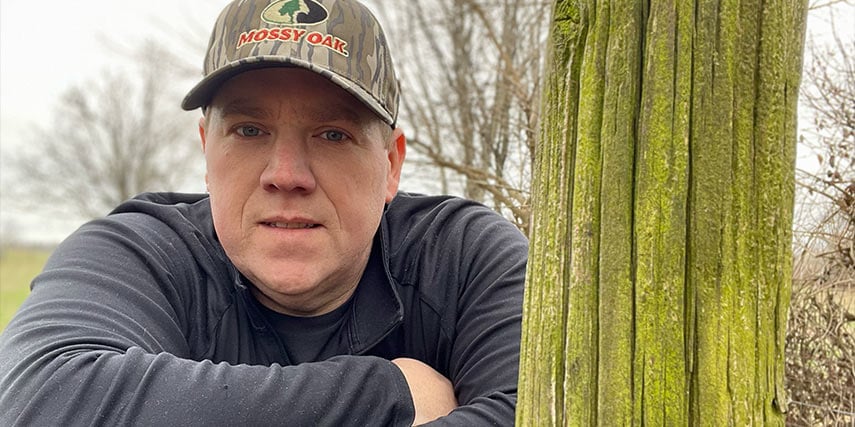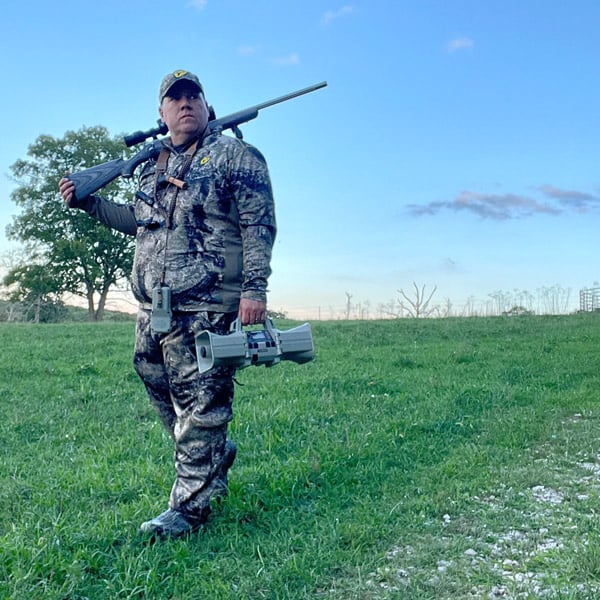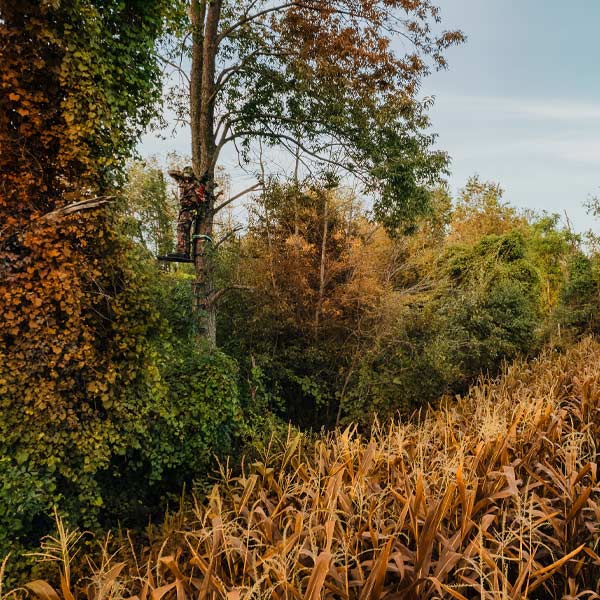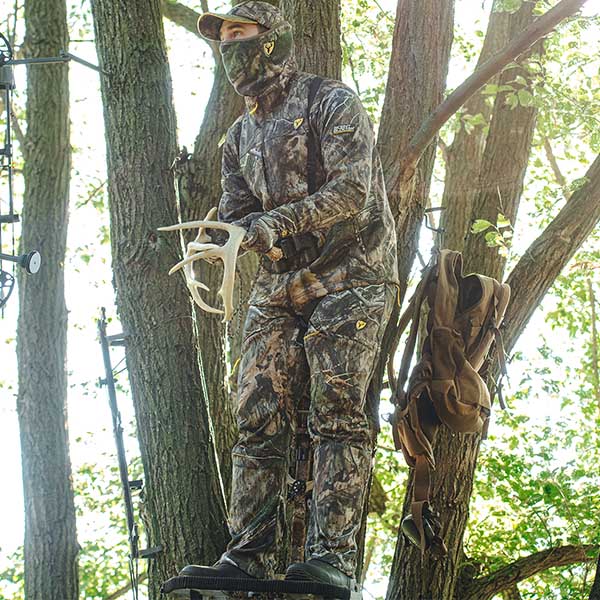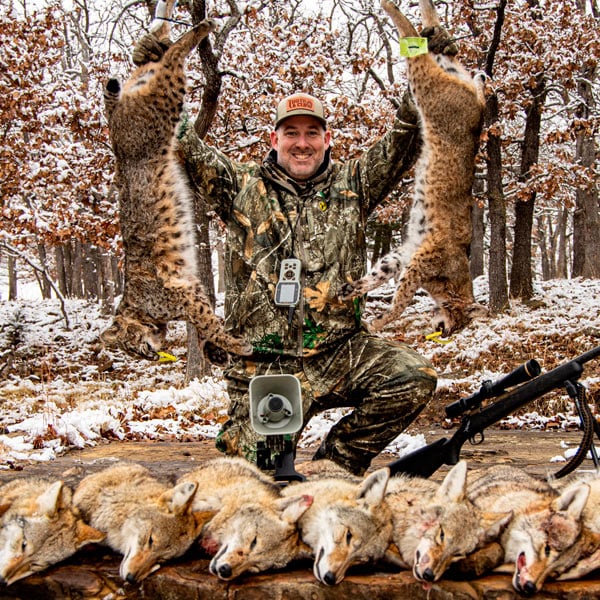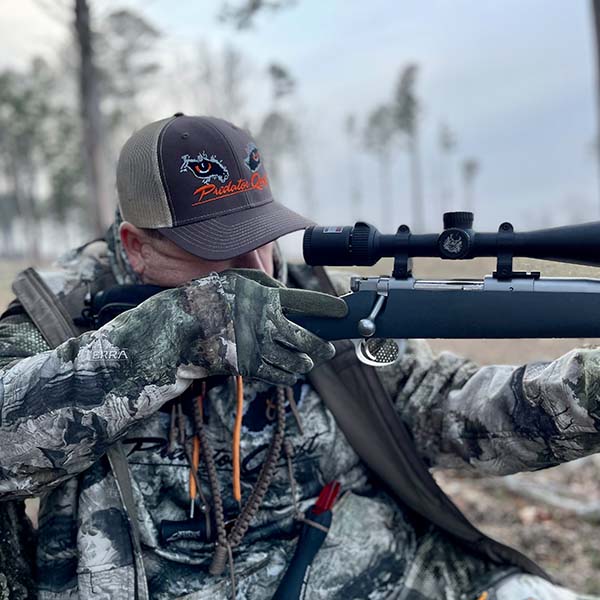While fishing a local farm pond, I noticed a strong smell that I could not identify. Walking around the pond bank, I stumbled upon what was causing the awful stench. It was the carcass of a young coyote. As I moved closer to investigate, I noticed the younger coyote had been suffering from a bad case of the mange. An awful part of mother nature, the scene was an example of something that landowners and hunters do not want to see.
Returning to fish on the other side of the pond to avoid the smell, a pack of coyotes sounded off as darkness was nearing. My predator-hunter instincts kicked in as I realized the coyotes were a mere hundred yards away, maybe closer. I made a mental note that I should trade my fishing rod for my electronic caller and rifle and return to this farm to try calling the coyotes within range.
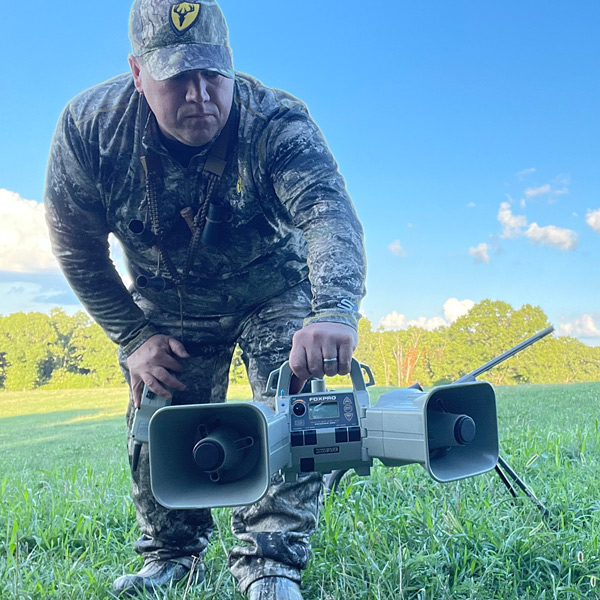
I decided to return to the farm a few weeks later in the middle of August. I knew I should use coyote pup sounds and other coyote vocals to trigger a response. With the wind in my face, I made my way to a higher elevation in a cow pasture near the spot where I had found the young carcass and in the same area where I had heard the coyotes in the distance.
After finding a cattle corral in the corner of the pasture, I elected to use the panels as a solid backdrop where I could sit and overlook the large pasture. Before sitting, I took my FoxPro XWave electronic caller to approximately thirty yards directly in front of where I would be positioned. Placing the caller, I returned to my setup and settled my rifle and bipod before making the first call.
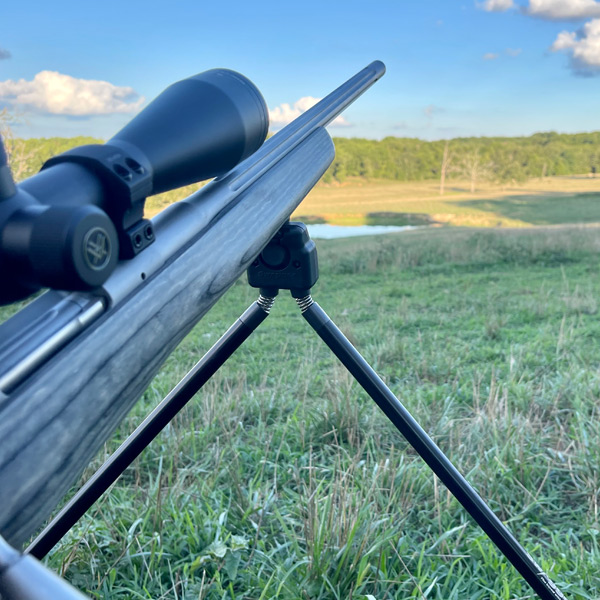
Allowing a few minutes for everything to settle down, I selected coyote pup howls on my remote and began my calling sequence. With the howls only playing for a mere thirty seconds, I thought I heard a coyote howling back at my call. After muting the call, I verified the response. I changed the sound to a coyote pup in distress in order to try and coax the coyote my way. A few seconds later, I spotted a younger coyote headed my way about 150 yards out. With the pup's distress sound continuing to play, the coyote slowly paced towards my direction. As the coyote continued to draw closer, I began eyeing him through the scope on my rifle. With disbelief, I noticed the young coyote also suffered from a horrific case of mange. I immediately decided I needed to take this coyote out because it was suffering and would not make it through the fall and winter when colder temperatures arrived.
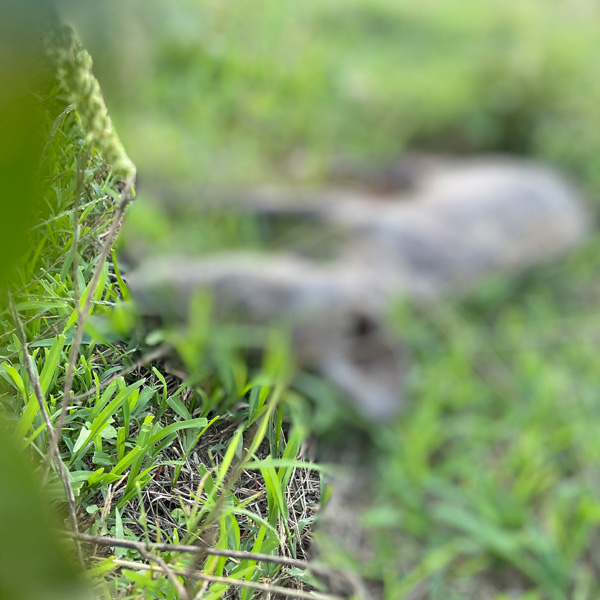
Late summer is an excellent time to call for coyotes. By August and September, the young coyote pups are old enough to begin venturing away from their dens and hunting for food. Coyote pups are immature and haven’t experienced danger or pressure from hunters. Being inexperienced, pups often respond to calling much faster than adult coyotes, making for exciting hunts. Another advantage for hunters is that adult coyotes are still protective of their young, even though they are training them to survive independently. The parental instincts of adult coyotes instigate them to respond to calls.
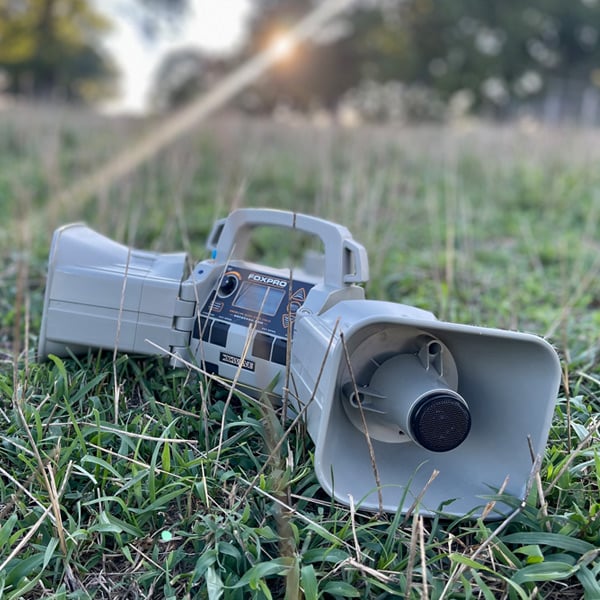
I prefer using an electronic call when hunting in late summer. My typical sound selections include various coyote vocals such as lone howls and multiple howls that sound like a pack of coyotes. To take advantage of younger coyotes, I use sounds such as pup howls, whimpers, and pup-in-distress sounds. Late summer habits cause coyotes to respond very well to such calls. Coyote pup sounds work great because they respond out of curiosity, and adults respond because, in their mind, the pups have ventured out and gotten themselves into trouble while trying to find food. When adults hear these sounds, they respond quickly to rescue their young.
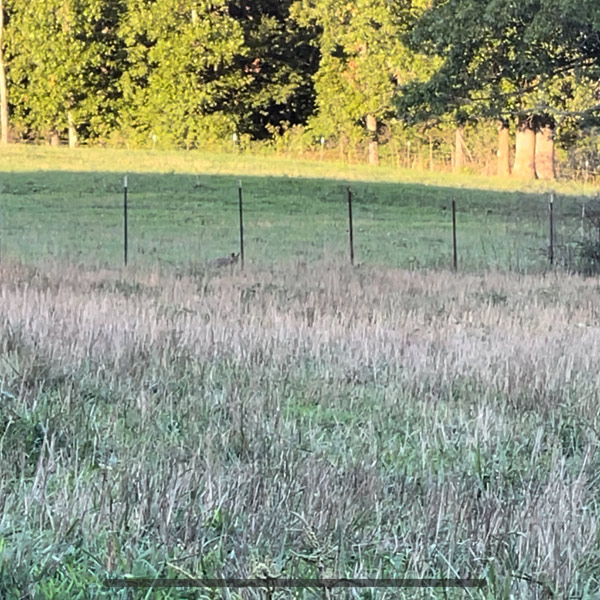
A few seconds later, the mangy coyote went under a fence and entered the same field where I was sitting. I made a successful shot at fifty yards. Even though the young coyote was hard to look at, I was thankful for having a successful late-summer hunt in an area where I knew coyotes were likely close by.

